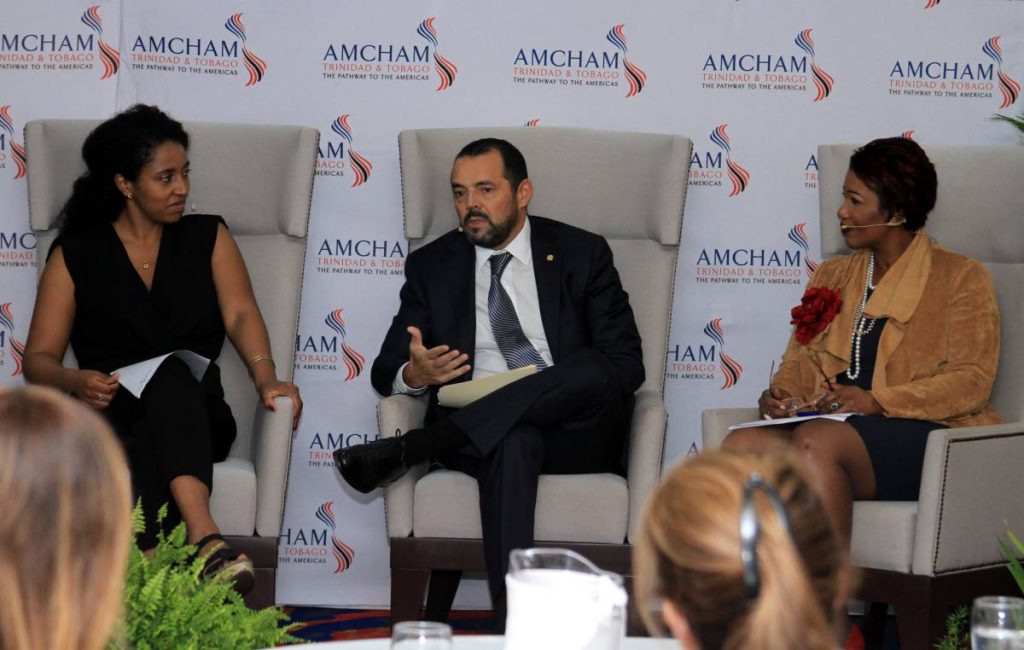Women still kept out of boardrooms

While women occupy 50 per cent of middle management, only 18 per cent of them ascend to be on the board of the directors in the Caribbean.
This statistic was presented at the Inter-American Development Bank (IDB) and the American Chamber of Commerce TT’s (Amcham) panel discussion titled, Why gender diversity and inclusion is good for business, at the Hyatt Regency, Port of Spain on Friday evening.
“In the Caribbean, labour force insertion rates for women exceed 75 per cent. Women hold 18 per cent of board-level positions and 29 per cent of executive positions. Many have risen to become CEOs and CFOs at these institutions, but more can be done to increase their numbers at the board level. Although these figures are the highest for the Latin America and the Caribbean region, there is still much more room to grow, said Rocío Medina-Bolivar, IDB group country representative.
Medina-Bolivar said companies with gender diverse teams are 15 per cent more profitable.
Patricio Torres, market head of the Anglo Dutch Caribbean for Nestle, discussed the importance of having women as active decision makers in a company.
As women are the primary consumers in the household with 60 per cent of the purchasing power, he said Nestle saw the need to have more gender diversity.
He noted that at a point in time, many women were not buying Nestle products because it was men making the products and men communicating the products for the female consumers to purchase.
He noted that when there is policy change to adapt to female workers, the male workers also benefit.
Flexi-time, he said was an important part of creating a gender inclusive workspace. When they implemented flexi-time to assist their female staff, the men started to approach him asking to leave early for work to pick up their children as well.
Lisa-Marie Alexander, chief marketing officer for JMMB, said the bank made an active decision to ensure a 50 per cent representation of women on the board of directors.
She said the company had one shareholder who would attend the annual general meeting and assess the board structure, and she would vocalise that it was not good enough. Through the conscious effort of the stakeholders and board members, they ensured that half of their board were women.
During the question and answer segment, Lara Quentrall-Thomas, chairman of Regency Recruitment and Resources, spoke on the cultural expectations of women to do their fulltime jobs as well as cook, clean and be primary home makers of the family.
In response Nirad Tewarie, CEO of Amcham, said the choice in partners is important. Before he and his wife got married, he said they had conversations about expectations in the household. She told him she would not cook every day and they both agreed that they did not want to clean, so they would hire someone to do that work. In 2017 the IDB co-created the Women’s Empowerment Principles Gap Analysis Tool (WEPs) with the UN Women and UN Global Compact.
This tool gives a baseline assessment of a company and shows where there are opportunities to create a meaningful action plan to create a gender diverse team.


Comments
"Women still kept out of boardrooms"